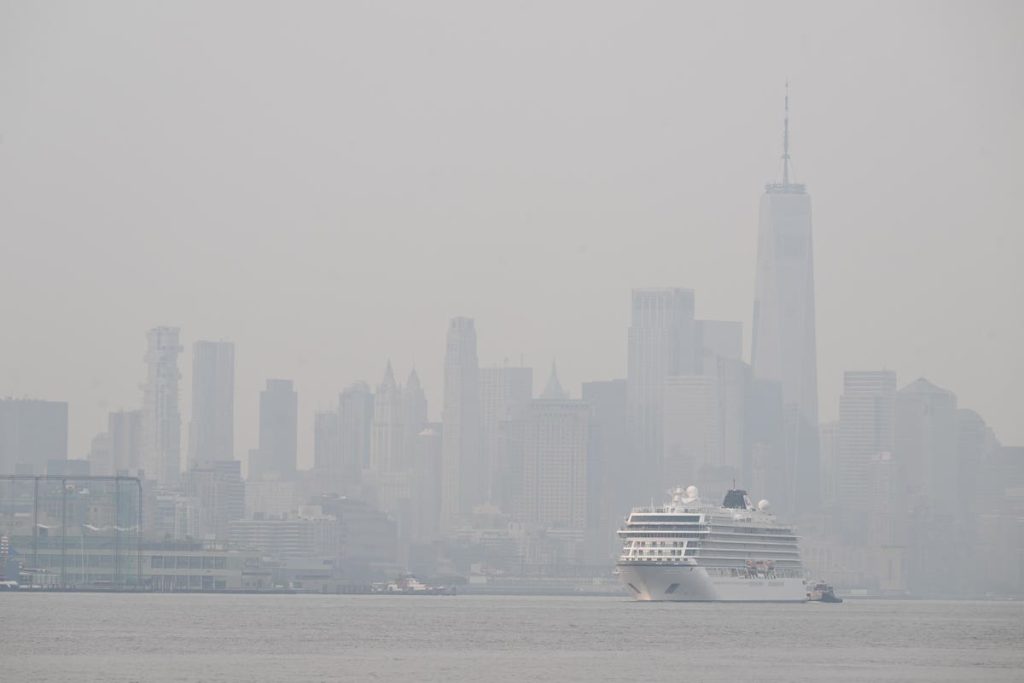Early this month, Quebec forest fires caused severe air pollution on the U.S. Eastern Seaboard. Although subject to some debate, many blamed climate change for these fires. Representative Earl Blumenauer of Oregon said, “We ought to treat it like the emergency it is.” On Twitter, Representative Ro Khanna of California urged Biden to “declare a climate emergency.”
The call for climate emergency is not new. In July 2022, some House members wrote a letter to the President, asking him to declare a climate emergency: “Such a declaration would unlock the broad powers of the National Emergency Act (NEA), the Defense Production Act (DPA), and the Stafford Disaster Relief and Emergency Assistance Act … will allow the United States to mobilize domestic industry, ramp up domestic manufacturing of clean energy technologies, and deploy resilient energy infrastructure.” Around the same time, a group of Senators wrote a similar letter to the President. They noted: “Declaring the climate crisis a national emergency under the NEA would unlock powers to rebuild a better economy with significant, concrete actions. Under the NEA, you could redirect spending to build out renewable energy systems on military bases, implement large-scale clean transportation solutions and finance distributed energy projects to boost climate resiliency.”
Apparently, President Biden seriously considered the climate emergency option but dropped the idea because Joe Manchin agreed to the Inflation Reduction Act.
What is a Climate Emergency?
Mirriam-Webster defines an emergency as “an unforeseen combination of circumstances or the resulting state that calls for immediate action.” Climate issues have received global attention at least since 1992 when the UN Framework Convention on Climate Change (UNFCCC) was adopted. Over the last three decades, countries have made progress on decarbonization, though much more needs to be done quickly. Many are frustrated (we certainly are) by policy sluggishness and even reversal. But are emergency declarations the appropriate route to address chronic policy shortfalls? If so, America could become an “emergency country” because it faces policy failure across issue areas – economy, education, inflation, housing, health, crime, and so on.
Moreover, if climate situation is really so dire and fossil fuel exploration needs to stop ASAP, why did President Biden approve the Willows projects, and the Mountain Valley pipeline, and why is his administration supporting the massive, long-term investments in gas export infrastructure? Moreover, he has urged oil and gas companies to pump more, not less, to keep oil prices down. Even climate leaders such as California have granted about 1,000 new oil and gas permits this year which potentially could create new supplies of oil and gas for several decades. Thus, there are contradictions between climate emergency talk and fossil fuel walk.
U.S. Presidents have tended to use national emergency declarations to bypass Congress. Indeed, as the Congressional Research Service notes, the 1976 National Emergency Act was enacted, “out of concern that Presidents had accrued too many extraordinary statutory powers available during a national emergency and that Presidents were using national emergencies to invoke powers that were originally intended to be available only during wartime.” Since 1976, Presidents have declared 58 national emergencies and 31 are still in effect. Emergency measures were invoked for illicit drug trade, the border wall, and have been demanded for gun violence.
While many emergencies had bipartisan support, climate emergency will be perceived as a way for President Biden to bypass Congress to enact climate policy. It will probably invite a legal challenge basically around the “major questions” doctrine which the Supreme Court noted in its 6-3 ruling in West Virginia vs. EPA.
Although there is gridlock at the federal level, many Republican states have installed significant utility-scale solar and wind generation capacity. The U.S. Energy Information Administration projects that in 2023 more than half of the new U.S. electricity generation capacity will be solar, with Texas in the lead position. The reality is that the climate policy dialogue has shifted in the last 10 years or so. Although historically, climate skeptics constituted an influential group, in 2023, few prominent politicians dispute that the climate challenge is real and caused by human actions. The political problem is that climate change has become a “trigger phrase,” symbolizing cultural wars. The trick is to push for renewable energy under the guise of economic development and not wave the climate flag and take victory laps. Of course, political modesty or taciturnity goes against the very essence of performative politics which Twitter has come to symbolize.
Tackling Real Impediments to Climate Policy
Impediments to energy transition are predominantly around issues such as grid connectivity, and the availability of critical minerals to support the electrification of the economy. Thus, permitting reforms are required so that new energy infrastructure can come up quickly. This may involve revisiting iconic environmental laws such as the National Environmental Policy Act (NEPA) which imposes procedural requirements for major federal projects. The recent bipartisan Fiscal Responsibility Act (FRA) to suspend the U.S. debt limit is an important step in this direction. The FRA streamlines the agency review process, including a two-year time limit for Environmental Impact Statements.
In sum, Quebec forest fires have caused massive air pollution problems for East coast cities. Climate change certainly contributes to forest fires along with chronic forest mismanagement and human carelessness. Some forest fires might require emergency measures to contain them and protect human life. However, forest fires do not justify the use of climate emergency to enact system-wide policy changes. Critical impediments to climate policy are now at the implementation stage such as grid connectivity and infrastructure permitting. This is where political efforts should be directed instead of virtue signaling over Twitter.
Read the full article here










